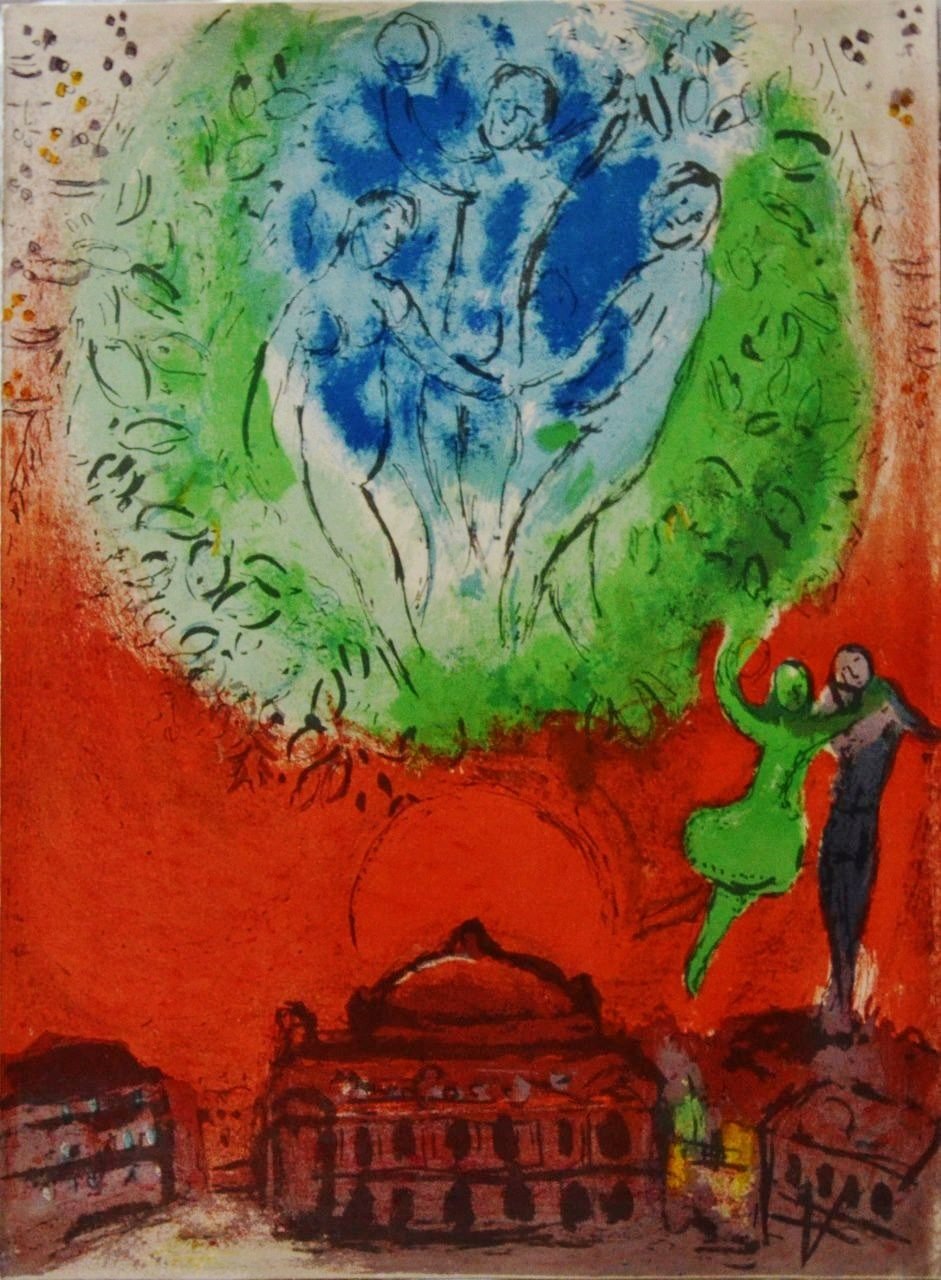L'OPERA 1954
Medium
LithographSize
38.4cm x 27.8cmPrice
SOLDProvenance
Original Lithograph in colours. Drawn and printed at the studio of Mourlot,Paris,1954 and issued in the albumn 'Derriere le Miroir' by Galerie Maeght, Paris 1954. Ref: Mourlot-Chagall Lithographs No 102. Hatje-Chagall Lithographs No 102 Note: one of nine compositions in colours for the famous 'Paris' series drawn by Chagall on his return to the city after the Second World War. Edition: This edition was issued in two parts, 75 signed impressions and the unsigned edition printed from the same stones and at the same date as here. The stones were then erased in 1954. This is an excellent rich impression on pale cream wove paper. PROVENANCE: Collection of William (Bill) Hammond former director of J.Walter Thompson We are grateful to William Weston for authenticating this work out of its frame.About the Artist
Marc CHAGALL (1887-1985)
Considered by many to be the finest colour lithographer of the 20th century, Marc Chagall created an impressive oeuvre filled with whimsical and thought provoking works. His mastery of printmaking extended to etching and aquatint as well, and his fascination with these techniques provided important new avenues for his creativity. Chagall’s unique style and iconography have made him one of the most highly collected artists in history.
Marc Chagall was born in Vitebsk, Russia in 1887 and lived to be 97 years old. His style, while reflective of cubist, expressionist and surrealist affinities, is distinctly personal. His contribution to early modern painting and printmaking has been outstanding. Chagall studied briefly with a local artist in Vitebsk, and in 1908 studied at the academy in St. Petersburg. In 1910, he went to Paris, where he would live for most of the rest of his long life. There, he met the poets Max Jacob, Blaise Centrars and Andre Salmeon and the painters Modigliani, Delaunay, LaFresnaye, and other cubists and independents. The complexities of Chagall’s aesthetics are apt to be obscured somewhat by the whimsical fantastic subject matter. Although cubism had an early and formative influence upon his works, it did not detract from his uniqueness of expression. The impact of cubist structure and spatial handling is evident in I and my Village (1911) and Over Vitebsk (1916), both in the New York Museum of Modern Art. Thereafter, his style becomes increasingly unique and the cubist aspects operate less evidently.
Appollinaire introduced Chagall to Herwarth Walden, the German publisher and dealer, in Berlin in 1914. This resulted in Chagall’s first one-man show in the same year. He returned to Russia to marry. After the revolution of 1917, he was appointed Commissar of Fine Arts for Vitebsk and founded an art school there. He designed murals for the Moscow Jewish Theatre in 1922 and then left for Paris by way of Berlin, where he stayed long enough to make engravings as illustrations for a book. The poet Cendrars was responsible for Chagall’s meeting with the dealer Ambroise Vollard. His first retrospective exhibition was given at the Galerie Barbazange-Hodebert, Parisin 1924. His style became increasingly romantic and devoted to fantastic narratives during the middle 1920s.
Chagall’s first lithography plates (30 in all 1922-23) were executed in crayon on lithographic paper. The Jewish Wedding (1926), a gouache and chalk composition, disclosed another tendency of his Russian origin. His first New York show dates from 1926. In 1927, he undertook the illustration of La Fontaine’s Fables, completing the 100 plates in 1930. In 1931, he traveled to Palestine and Syria to study themes for Biblical engravings, another Vollard commission.
By now, Chagall had become internationally famous, and a large retrospective in 1933 at the Basel Art Museum increased his prestige. He was disquieted, however, by political developments in Europe during the early 1930s and the increasingly severe persecution and threat of war lead him to paint religious works of a darkly exciting kind. His apprehensions were aggravated by a visit to Poland in 1935.
In 1939, the first prize in the Carnegie International, Pittsburgh, was given to Chagall, and in 1941, he settled in the United States at the invitation of the Museum of Modern Art. At first rejuvenated by his new environment, he was deeply saddened by the death of his wife in 1944. Before returning to Paris in 1946, he completed the sets for Stravinsky’s Firebird and other theatrical designs. He also produced 13 colour lithographs for One Thousand and One Nights. On his return to Paris, Chagall went to master printer Mourlot, who was responsible for the revival of lithography after the war.
Chagall had retrospective shows in 1947 in Paris, Amsterdam, and London, and was represented at the 1948 Venice Biennial. In 1949, he worked in Venice, primarily with ceramics. In that year, he also painted
Category
20th Century


